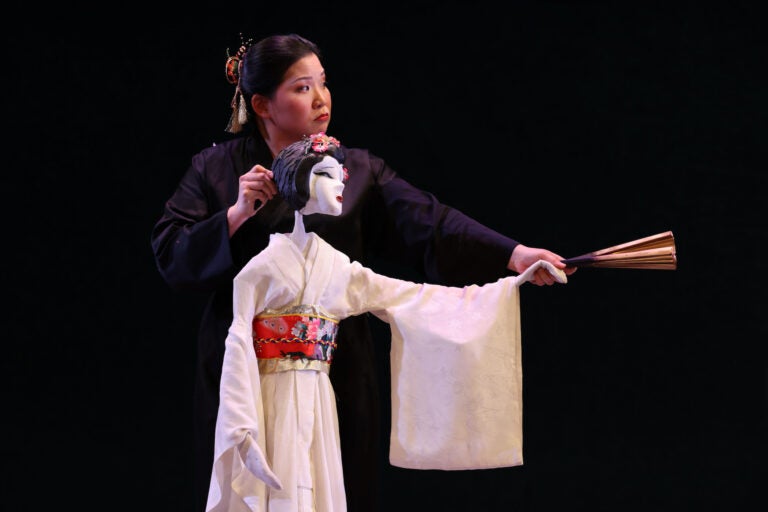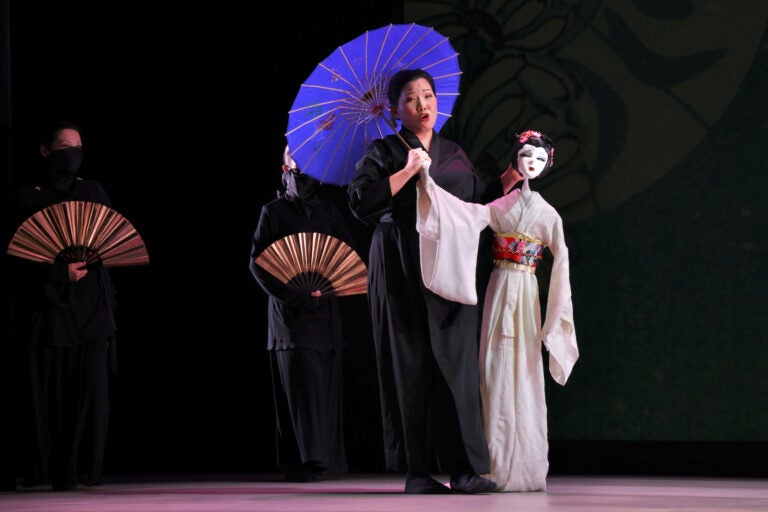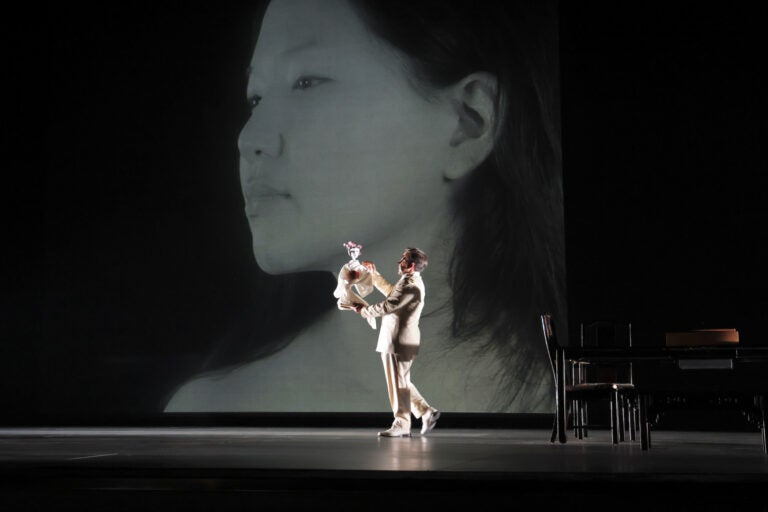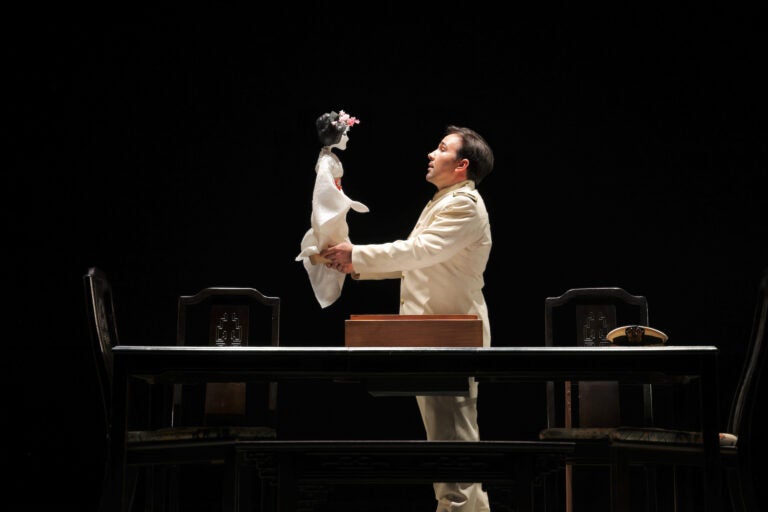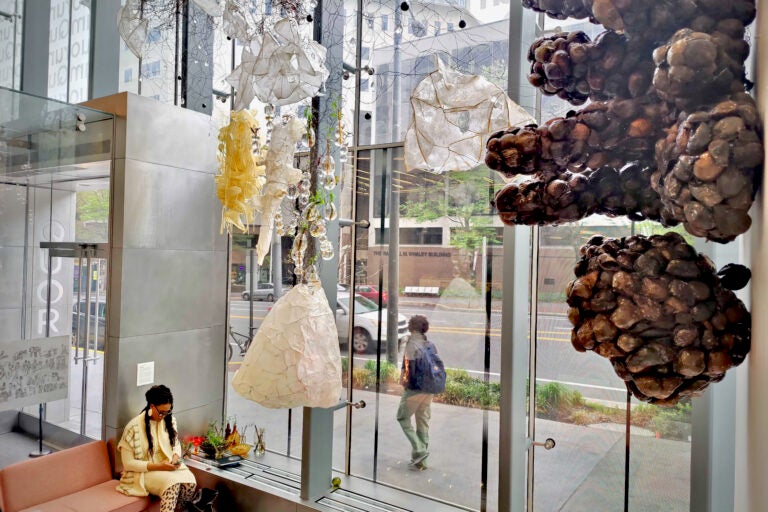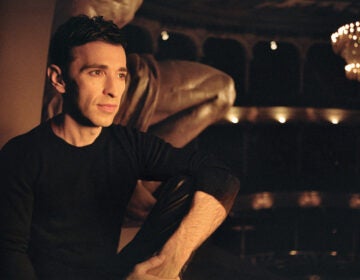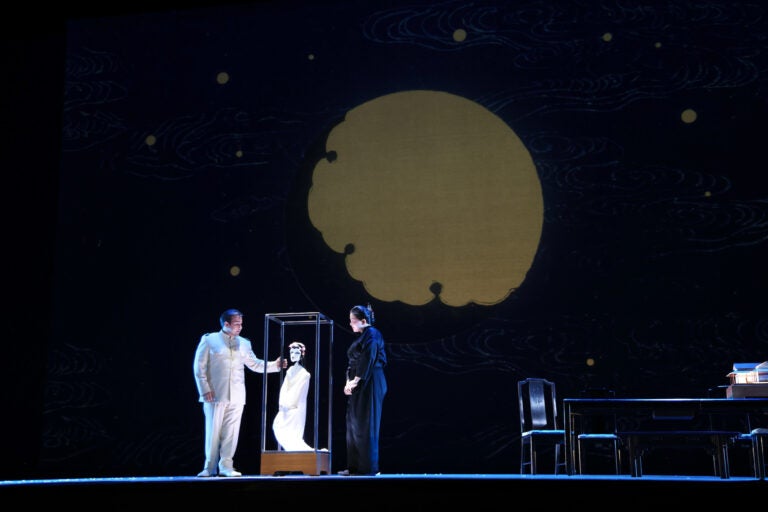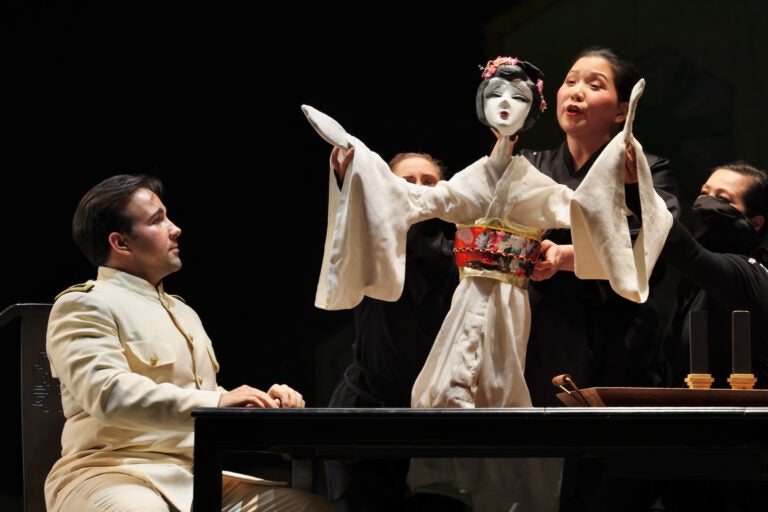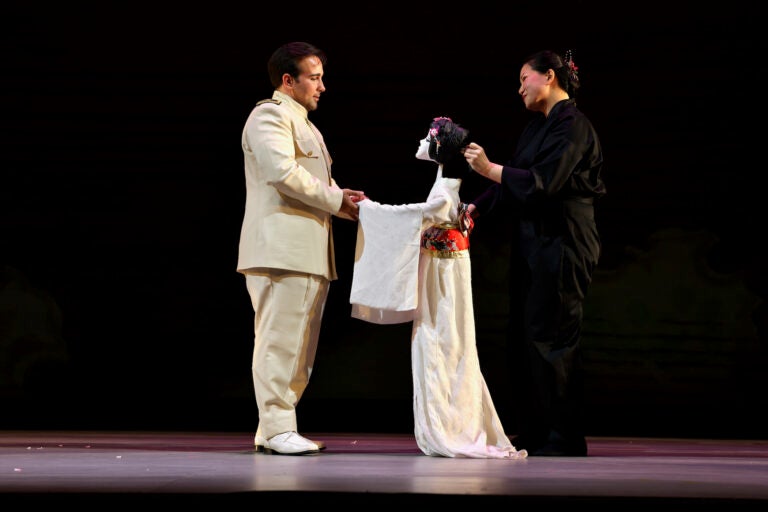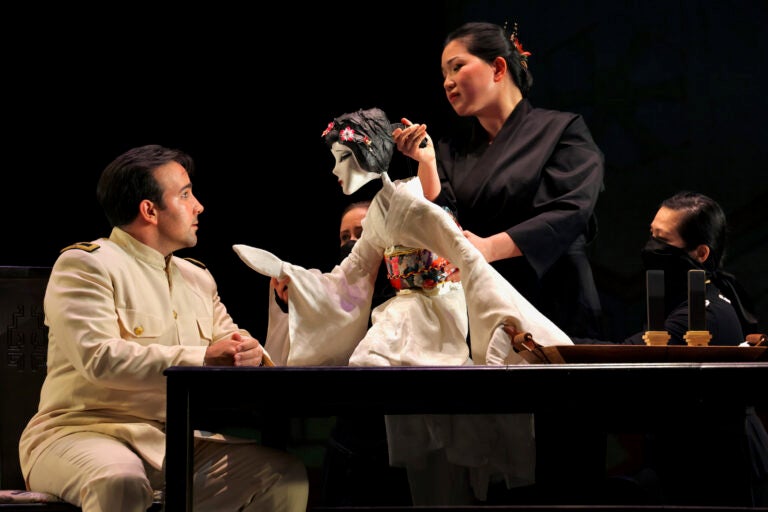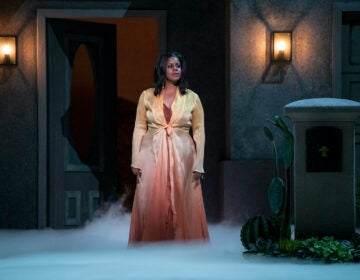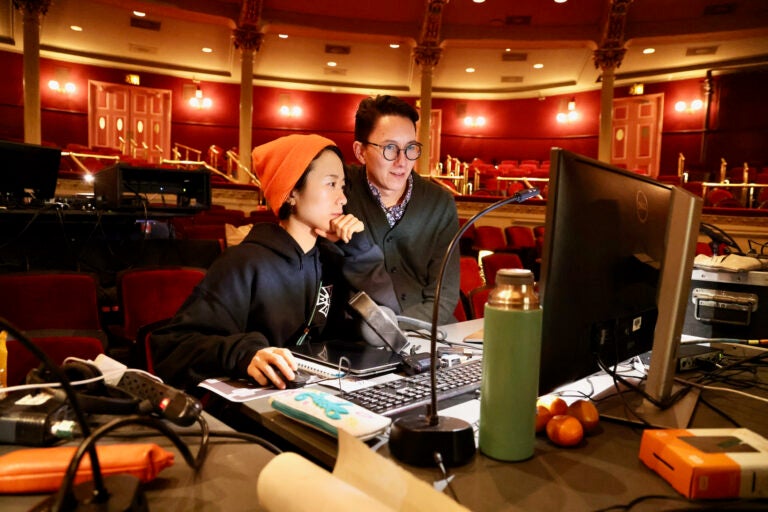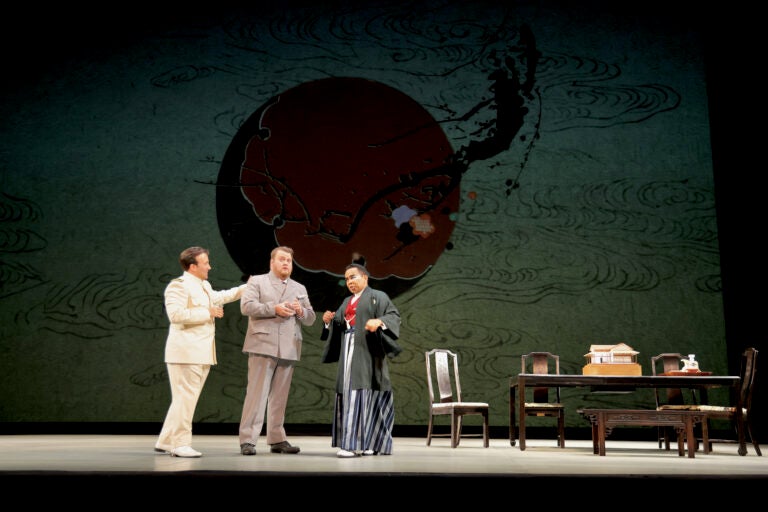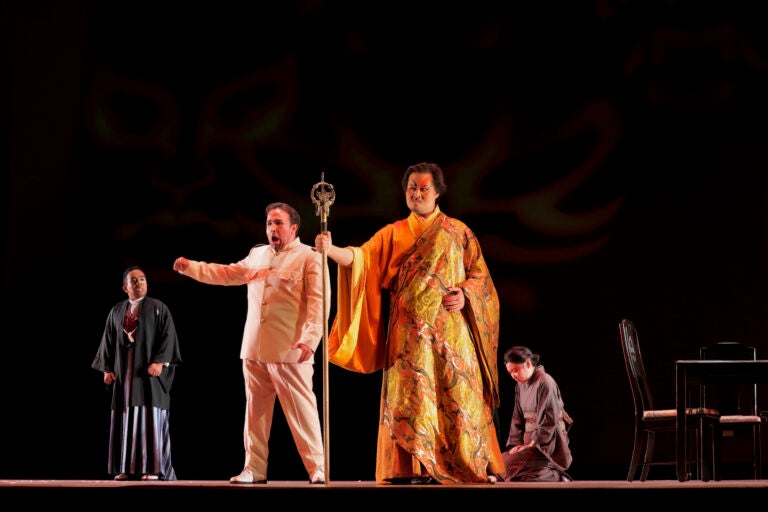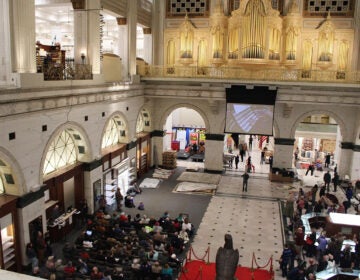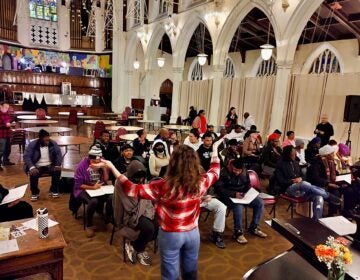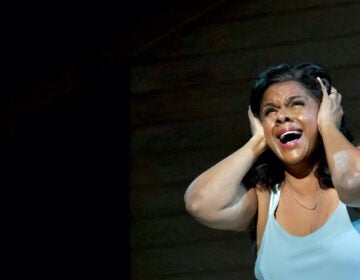Opera Philadelphia’s ‘Madame Butterfly’ evades ‘Puccini’s trap’ with an operatic puppet
The short story and opera is both beautiful and a problem. Opera Philadelphia designed a puppet to help it avoid orientalism.
Listen 1:21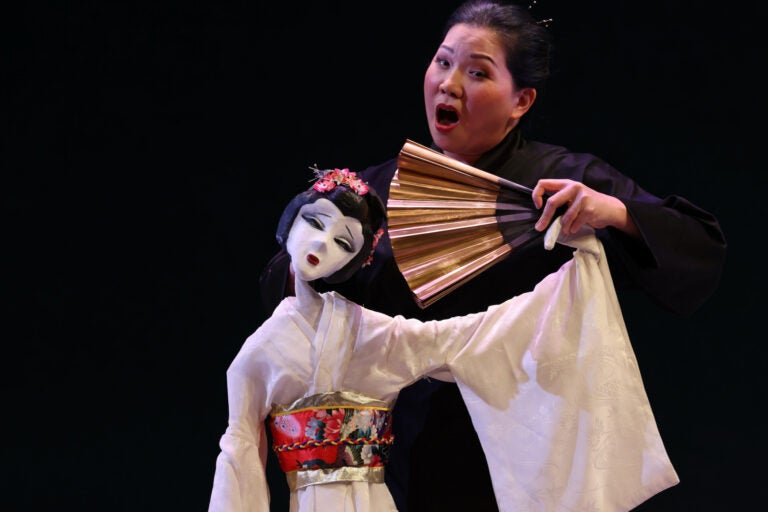
The title role of Madame Butterfly in Opera Philadelphia's production is represented by a puppet, voiced and manipulated by Karen Chia-ling Ho. (Emma Lee/WHYY)
From Philly and the Pa. suburbs to South Jersey and Delaware, what would you like WHYY News to cover? Let us know!
Opera Philadelphia has devised a unique production of Puccini’s iconic “Madame Butterfly,” running this weekend and next: The title character is a puppet.
As the story goes, a U.S. Navy officer named Pinkerton stationed in Japan falls in love with a 15-year-old geisha girl named Cio-Cio San, making a deal to marry her.
Because the officer repeatedly refers to Cio-Cio San as a “doll,” production designer Yuki Izumihara decided to make it literal.
“A doll has a spirit. In Japan there is a ceremony where when you don’t need a doll anymore, you don’t just throw it away. You take it to shrine and get a proper funeral,” Izumihara said. “That was, spiritually, the inspiration of the idea.”
Philadelphia artist Hua Hua Zhang designed a stylized version of the tragic geisha as a traditional Chinese rod puppet about four feet tall.
“Madame Butterfly” has been a favorite for 120 years for the beauty of its music and its emotional highs and lows. But it is also a problematic opera, dripping with cultural appropriation and stereotypes that can be exacerbated by production decisions.
When the San Francisco opera staged its production of “Butterfly” last year, it included on its website a breakdown of the ways the opera is guilty of orientalism, or fetishizing Japan through Western perspectives.
Izumihara calls the opera “Puccini’s trap.”
“The beauty of the music is undeniable,” she said. “The trap was that that beauty was built without thinking of the consequences. Now as Asian artists we are dealing with the consequences in a way which, at the end of the day, we hope the layer that we bring is also beautiful.”
As the story goes, when Cio-Cio San marries the American her family rejects her for abandoning their faith. But after conceiving a baby, Pinkerton also abandons her and returns the States. He marries an American woman and returns to Japan to retrieve his son. With no family, no child and her great love gone, Cio-Cio San kills herself.
The music carries the huge emotions of the tragedy.
“I have a connection to the piece, being Japanese,” Izumihara said. “My uncomfortability is watching a presumably Japanese woman — a girl — onstage being treated a certain way.”
“She ends her life at 18,” she said. “And everybody is applauding.”
Izumihara and director Ethan Heard put their heads together to find a way to stage “Butterfly” without falling into its trap.
“’Butterfly’ is this famous piece that we do over and over again. The actual character has become quite a pervasive stereotype in our culture,” Heard said. “The Asian woman who is small and delicate and fragile — beautiful, exoticized, objectified — and she sacrifices everything, gives up her son and kills herself for the white man. That is problematic.”
Heard did not change any of the text or music in this version of “Butterfly,” but shows in the staging that the American buys a literal doll in a shop, which then becomes an animated puppet.
The part of Cio-Cio San is sung by Karen Chia-ling Ho. By making the character both a puppet and a real singer, Cio-Cio San is split into two entities: The puppet expresses the lovelorn tragedy of the girl, and Chia-Ling Ho embodies what Heard calls her spirit.
“Over the course of the show, Karen the spirit realizes that she’s trapped in a trope and wants to distance herself from the puppet,” Heard said. “I think the puppet powerfully manifests our ideas and questions about the show. Audiences will get to see a traditional ‘Butterfly’ represented in front of them, but at the same time they’ll see this modern, more feminist woman watching ‘Butterfly.’”
Puppetry has been used in “Madame Butterfly” before. In 2006 the now-late film director Anthony Minghella directed a production for Metropolitan Opera that used a puppet to a different effect, to depict Cio-Cio San’s young son.
Puppetry can have an odd theatrical effect in performance, as audience members are often quick to infuse huge emotions onto a puppet while at the same time understanding it is merely an object.
“We’re seeing Pinkerton manhandle the puppet and hold the puppet, which I think theatrically is really exciting,” Heard said. “I also think puppetry implicates the audience, asking the audience to imagine and project onto the puppet. I love that.”
Opera Philadelphia’s “Madame Butterfly” performs for two weekends, Friday and Sunday, April 26–May 5.

Saturdays just got more interesting.
WHYY is your source for fact-based, in-depth journalism and information. As a nonprofit organization, we rely on financial support from readers like you. Please give today.



